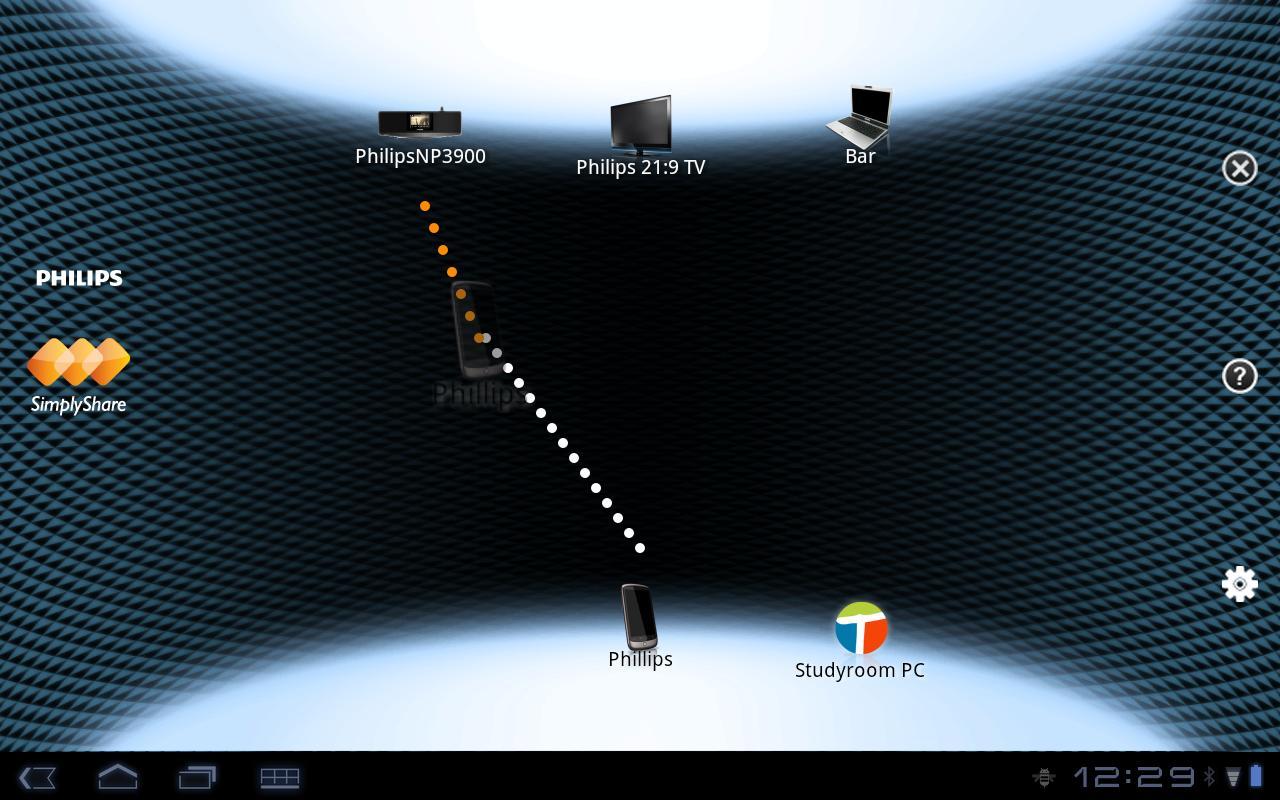
SimpleShare, free and safe download. SimpleShare latest version: A Free Websites & blogs program for Windows. SimpleShare is a popular, free software only. Jan 25, 2012 - Android streaming is possible for any DLNA (Digital Living Network Alliance)-enabled device with the Philips app SimplyShare and Wi-Fi.
Hi, Problem: my Philips TV DOES see the Serviio server and the Music, photo and Video folders, but DOES NOT no content at all. Solution manual for accounting. The manual states the following: Windows Media Player 11 (for Microsoft Windows XP, Vista of Windows 7) • TVersity 1.9.3 (pro) (for Windows XP) • Twonky Media - PacketVideo 4.4.9 (for PC and Intel Mac OS X) • Nero 9 - Nero MediaHome (for Microsoft Windows XP) • Sony Vaio-mediaserver (for Microsoft Windows XP of Vista) • Sony PS3-mediaserver (for Windows XP) • Google Media Server (Google Desktop) (for Windows XP) • DiXiM (for Windows XP) • Macrovision Network-mediaserver (for Windows XP) • Philips NAS SPD8020 (v.
1.2.9.47) • Fuppes (voor Linux) • uShare (voor Linux) So, Twonky is there, but I prefer Serviio! What changes in the Philips (or general) profile would recommend? And how can I make these changes?
If you’ve ever watched the photos on your digital camera come alive on your TV or played the music files on your computer over your home theater system, you’ve brushed against the magic of DLNA. This widely integrated but little understood technology allows you to stream media files from a hard drive or memory card to other devices on your home network without your needing to know a whole lot about codecs, file formats, or even how your network operates. DLNA stands for Digital Living Network Alliance, the trade group founded by Sony in 2003 to define the interoperability guidelines that make this communication possible. Prior to DLNA, setting up a home-entertainment network was an arduous process of gathering IP addresses and configuring each component to talk to the others with no guarantee of success. DLNA simplified the process by establishing a single protocol that ensured DLNA-certified multimedia devices from different manufacturers would work together.
How it works DLNA separates multimedia devices into subdivided into three broad categories: Home Network Devices (PCs, TVs, AV receivers, game consoles), Mobile Handheld Devices (smartphones, tablets, digital cameras), and Home Infrastructure Devices (routers and hubs). A device’s class is determined by its functional capabilities—whether it stores, controls, or plays media—rather than the type of product it is. So it’s possible (even common) for a device to fall into more than one class. Some DLNA-certified TVs, for example, can be classified as both a —meaning it can locate and play media from other devices—and a —because media can be pushed to it by an external controlling device. Yamaha A modern AV receiver that supports DLNA can stream movies, music, and digital photos from a storage device attached to your home network to your smart TV. All DLNA-certified devices use Universal Plug and Play (UPnP) to discover and talk to each other on the network. When you connect one to your router, it should automatically appear on any other DLNA-certified component’s menu without needing you to perform any setup.
In a typical scenario, you might have a PC running DLNA-certified software that transforms it into a media server. Your DLNA-certified player—a TV or game console, for example—would be able to browse the content on the PC and stream it. Alternatively, a controller, such as a tablet or smartphone, could discover the content on the PC and tell the TV to play it back. Getting started With more than on the market—including TVs, Blu-ray players, storage devices, media boxes, smartphones, tablets, game consoles and software—chances are good you already have more than one compliant device or application in your home.